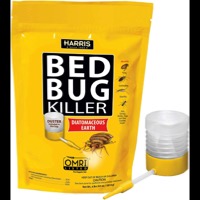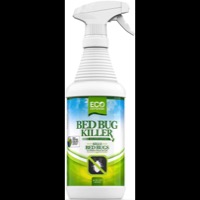Getting rid of Bed Bugs

By Jess Simmonds, Expert Reviewer for Repellent Guide
published: Aug 01, 2017 | updated: Aug 01, 2017
You probably won't be interested in bedbugs or even know much about them until you've been bitten by one and suddenly these little elusive little critters become much more interesting! their bites can be suprisingly itchy and last for days or even weeks.
A bedbug is simply a small, flat wingless insect and blood-sucking parasite that normally feeds on both mammals and birds. The Bedbugs belong to insect family Cimicidae, and although there are various different species, the common species that are associated with human infestations are the Cimex hemipterus and Cimex lectularius. Adult bedbugs are normally reddish brown in colour, oval-shaped, flat, and approximately 4 to 5 millimetres in length. The nymph (immature bedbugs) may look translucent or light tan in colour. They are often more red in colour especially after feeding.
TIP: Bedbugs are strongly attracted by warmth and generally feed during the night time and again just before dawn and tend to feed every five to ten days, though they can survive without feeding for numerous months.
Bedbugs pierce the skin and inject their saliva which contains anticoagulants and anaesthetics into the host which make their bites painless at the beginning. However, after feeding on the blood of host’s for several minutes, bedbugs will then retreat to their hiding place.
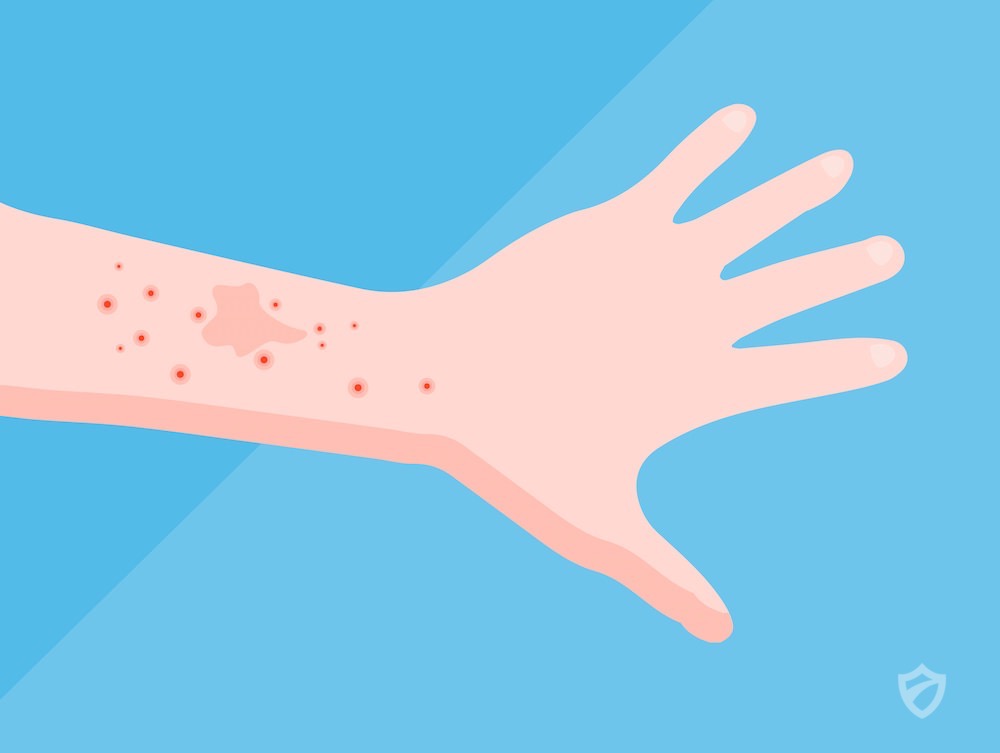
They will try to remain within very close range of their warm-blooded host. The affected individuals are likely to feel and see the bedbugs’ consequences sometime afterward. The bedbug transmission of diseases is possible theoretically; it has not yet been definitively proved however.
The Causes of Bedbug Infestations
Since Bedbugs are found in the temperate and tropical climates globally, they are therefore the most commonly found insects in living quarters as their hosts reside there. Bedbugs in general, hide in both the seams and crevices of box springs and mattresses, bed frames, old furniture, headboards and in behind loose wallpaper or spaces underneath baseboards. Disarray and clutter also provide extra hiding places for the bedbugs.
The insects may be transported from one point to another via luggage, clothing, furniture, and used mattresses. Even though they are often associated with unsanitary living conditions, the insect’s infestations also take place in clean, well-maintained living quarters, such as five-star hotels and resorts. Their infestations have been reported increasingly in hotels, homes, dormitories, apartments, jails, nursing homes, and hospitals. There have been major cases in the U.S. that involves litigation because of bedbug infestations.
The recent resurgence in the bedbug infestations globally is thought to be related to various different factors, such as the increase in international travel, insecticide resistance, dense urban living conditions, and new, ineffective pest-control mitigations.
The hiding places of Bed Bugs
Bedbugs may enter your residence undetected either through luggage, used couches and beds, clothing or other items. Their flattened bodies help them to easily fit into tiny spaces, which are about the width of credit card. They do not have nests like bees and ants, but tend to exist in groups in hiding places. Their preliminary hiding places are usually in mattresses, bed frames, box springs, and headboards where they have got easy access to people especially in the night. Once again, these insects pierce the skin and inject their saliva which contains anticoagulants and anaesthetics into the host which make their bites painless in the beginning
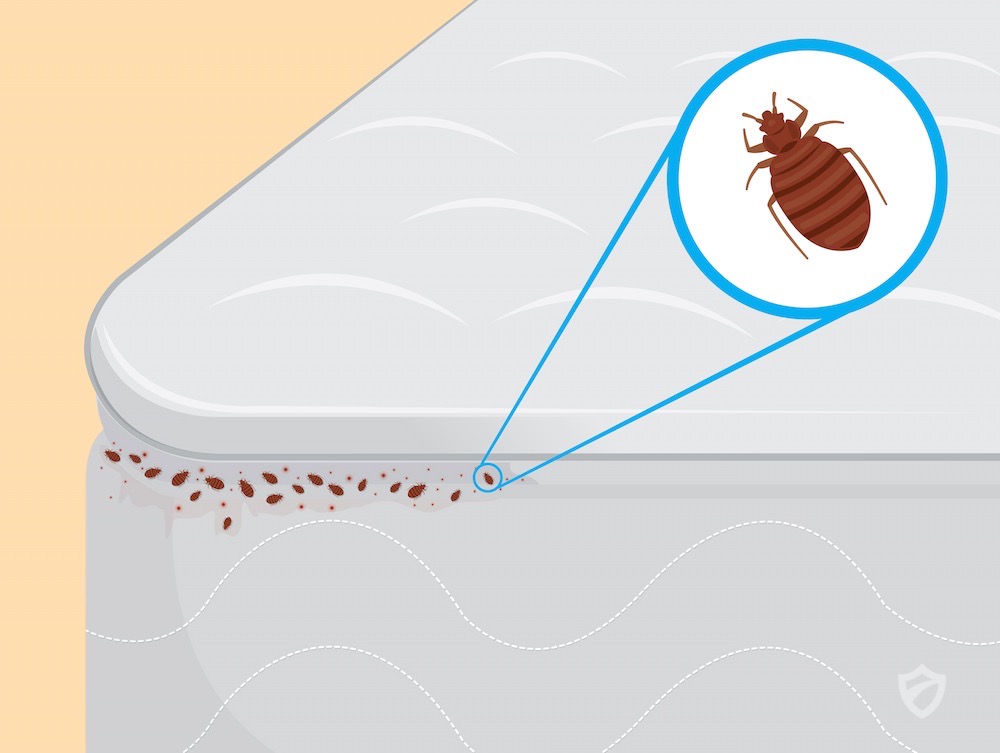
Eventually, however, they may then scatter throughout the bedroom, into any crevice or other protected location. They may too spread to nearby rooms or apartments. Since bedbugs live solely on blood, existing in your home is not a sign of dirtiness. They can likely be found even in immaculate hotel rooms and homes as in filthy ones.
The Feeding
- Bedbugs appear to favour to feed on humans, but will also feed on other birds and mammals as well.
- They will readily travel 5 to 20 feet from an established hiding places (harbourage) to be able to feed on a host.
- Although they are primarily active at night, if they are hungry they will seek out hosts even in full daylight.
- Their Feeding can take 3 to 12 minutes.
- The tarry or rusty spots found on bed sheets or hiding places are because up to 20% of the time large nymphs and adults will void remains of previous blood meals while still feeding.
The Life stages and mating of bedbugs require at least one blood meal before the individual bug can build up to the next one of the six life stages. They are capable of feeding more than once. Every stage requires the moulting of skin. In order to continue to mate and began to produce eggs, both males and females have to feed at least once in every 14 days. Every female may lay between 1 to 3 eggs per day and 250 to 500 eggs per her lifetime (6 to 12 months but this could be even longer).The Egg-to-egg life cycle may take between four to five weeks under favourable environment and conditions.
The Living conditions
Bed bugs can comfortably survive and remain active at a temperatures of as low as 7 degrees Celsius or 46 degrees Fahrenheit, but they immediately die when their body temperatures reaches 45 degrees Celsius or 113 degrees Fahrenheit. In order to kill bed bugs with heat, the area/room must be hotter to ensure that the sustained heat gets to the bugs no matter their hiding place. The Common bed bugs can be found in almost anywhere where their host can live. Tropical bed bugs (Cimex hemipterus) need a higher average temperature than the ordinary bed bug and are created in subtropical and tropical areas.
The Signs of Infestation
If you wake up with itchy areas on your body that you didn't have when you went to bed, then you may have bedbugs, especially if you got a used bed or some other used furniture which is around at the time the bites started. Other signs of bedbug’s infestation include:
- Blood stains on your pillowcases and sheets
- Rusty or dark spots of bedbug excrement on pillows, sheets, mattresses, walls, and bed clothes
- Egg shells, bedbug faecal spots, or shed skins in regions where bedbugs hide
- An offensive and musty odour from the bed bugs' scent glands
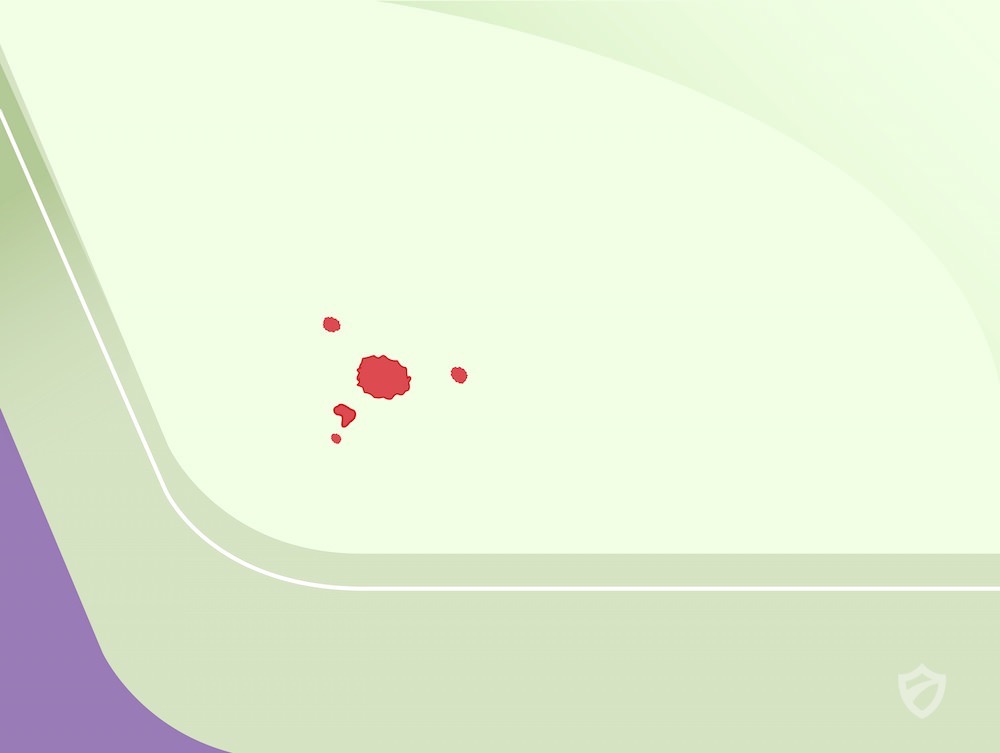
Therefore, if you suspect any infestation, then remove all bedding and thoroughly check it carefully for any signs of the bugs or even their excrement. Get rid of the dust cover over and at the bottom of the box springs and keenly examine the seams especially in the wood framing. Also, make sure the area around the bed, inside books, radios, or telephones and the edge of the carpet, are thoroughly checked and inspected.
How to control bed bugs
It should be noted that a bed bug's secretive nature is what makes it a difficult pest to identify and also to eliminate. These insects are not seen crawling around in the day time or hours where they would be identified easily. They therefore hide in diverse areas during the day and at the night will come out at quiet times to feed specifically on human blood. Because they usually wait for host to sleep, it does not see or even feel their presence. So, the obvious sign that bed bugs infestation are in a room is the presence of small blood drops.
They can be controlled, but it in most cases it requires an approach called integrated pest management or simply IPM. It combines various techniques that pose the lowest risk to health and the environment. The following strategies can be undertaken:
- Thoroughly Clean and get rid of clutter, particularly in the bedroom.
Relocate your bed away from furniture or walls.
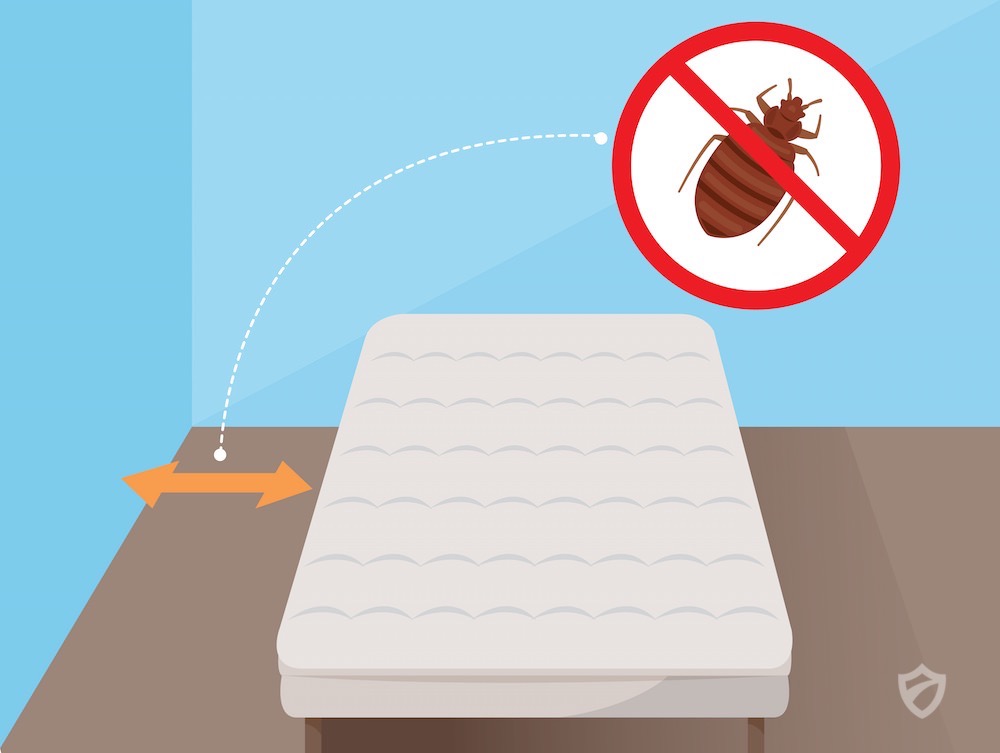
Vacuum moulding, floors and windows every day.
Vacuum seams and sides of mattresses, furniture and box springs.
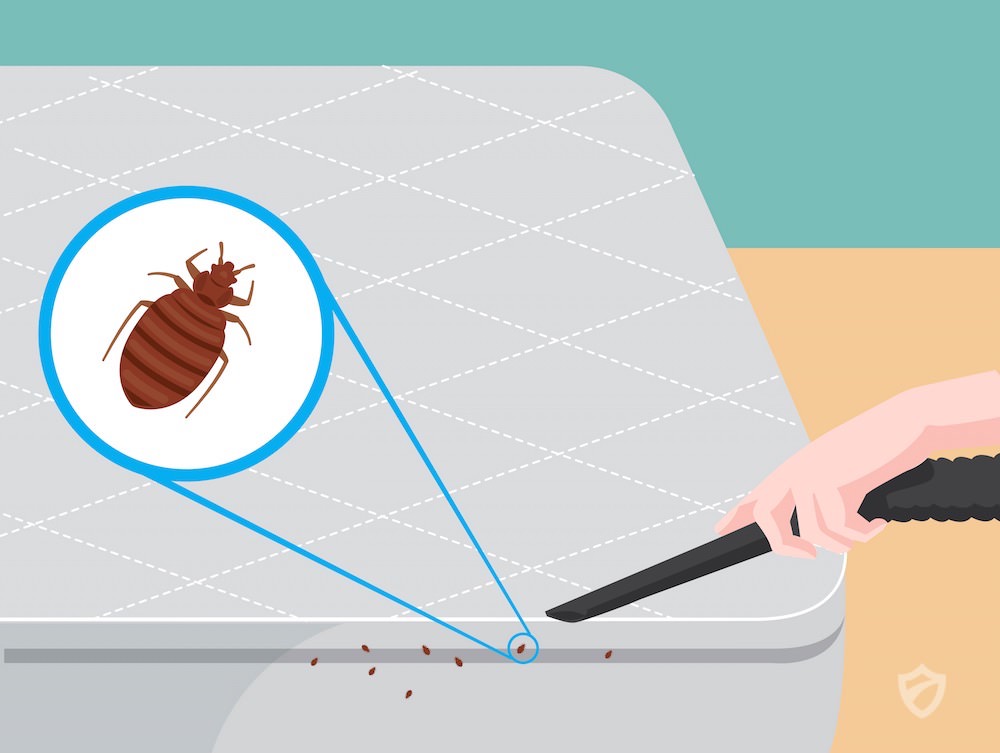
Empty the bag or the vacuum immediately and then dispose them outside in a sealed bag or container.
- Clean/wash sheets, blankets, pillow cases and bed skirts and keep them in a hot dryer for up to at least 30 to 45 minutes.
- Think about using box spring and mattress covers, the kind used for dust mite control and put a duct tape over the zippers.
Seal crevices, cracks and any openings where wires or pipes come into the home.

Glue down peeling wallpaper and repair cracks in plaster to get rid of areas where bedbugs can hide.
Pest control products to fight against Bed Bugs
The Bed bug control and elimination procedures, products and methods closely look like those used in the indoor tick (parasite) elimination and control process, due to their size, areas of harbourage and habits. Thorough, step by step inspection of the premises will greatly save time and money. It should be remembered that, these are tiny bugs that can be found in any small crack which is in proximity to where humans sleep or rest. A thorough vacuuming of crevices cracks plus other bed bug hiding areas are an essential part of the integrated pest management program which targets this particular pest. However, a combination of odourless pest control products (insecticide spray) are needed to completely eliminate bed bug populations with unique attention given to the specific bed bug hiding places.
A general purpose spray is used on carpets, baseboards and furniture to assist in cutting back on the population. Pest control service professionals tend to use premium fogging resolutions in addition to the other pest management methods for bed bug control. These are very effective.
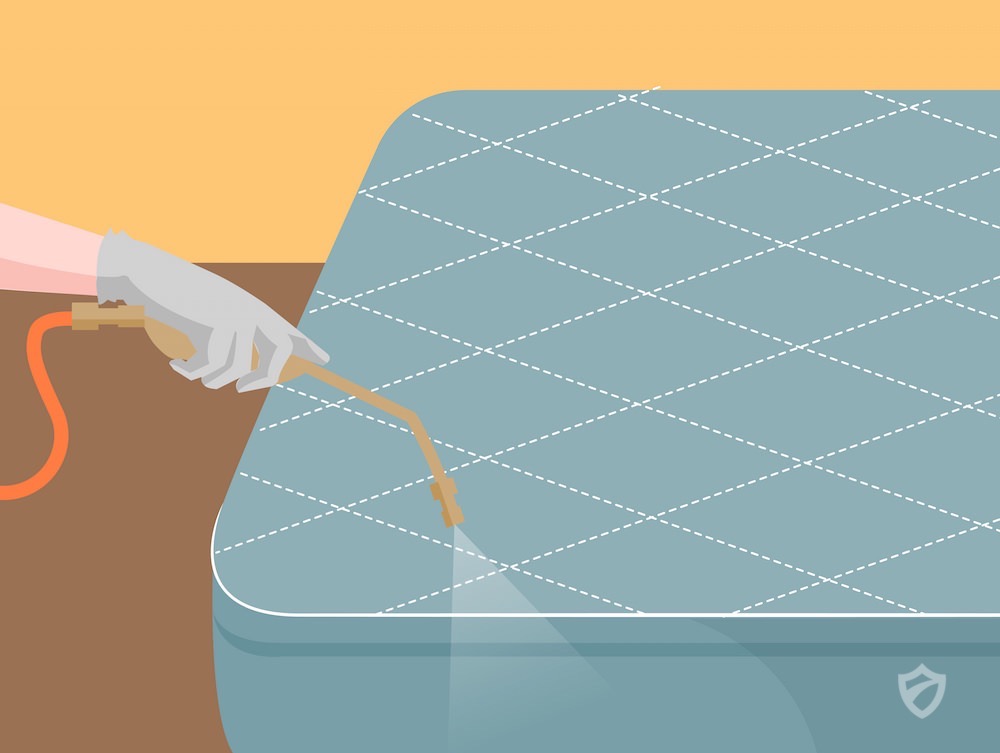
It should be noted that the elimination of a bed bug infestation takes quite some patience. This is because the pests live in very tiny cracks that may be difficult to reach with the pest control products and they can also live a longer time without food compared to other blood feeding bugs like fleas. The most common blunder made when controlling bed bugs is not knowing the type of insecticide and pest control products to use in the correct areas. For instance, in controlling ticks, you have no option but to apply a professional insecticide into tiny cracks where the targeted pest hides.
Products that are used to kill bed bugs
The Pyrethroids and Pyrethrins; pyrethroids and Pyrethrins are the most familiar compounds used in killing and controlling bed bugs and other interior pests. Pyrethrins products are botanical insecticides that are derived from the chrysanthemum flowers. Pyrethroids are also synthetic insecticides that act just like pyrethrins. The two compounds are lethal to bed bugs and can also kill or flush bed bugs out of their hiding places. However, where there is presence of resistant bed bug strains, these treatments products may cause them to relocate to a new hiding place.
Desiccants products
The Desiccants (Diatomaceous earth and Boric acid) work by destroying the waxy, protective outer coating of bed bugs, Whenever this coating is destroyed, bed bugs will then slowly dehydrate and finally die. Desiccants products are a valuable tool used in bed bug control. Since desiccants work throughout a physical mode of action, bed bugs cannot be resistant to desiccants and pesticides the same way they can with other modes of action. Additionally, they have a long-lasting result and don't upset the normal bed bug activities.
The Bio-chemical products
Cold pressed neem oil is the one and only biochemical pesticide product registered for use in killing and controlling bed bugs. It is pressed directly from seeds of Neem tree, a tropical evergreen tree that is found in Africa and Southeast Asia. The oil has got various compounds that have insecticidal and medicinal properties. It is used in making products such as shampoos, soaps, toothpaste, and cosmetics too so is safe to humans. The Performance trials that conducted at the approved label rates depicts both products control bed bug adults, eggs, and nymphs.
Pyrroles
Chlorfenapyr is one of the only pyrrole pesticides that are currently registered for use alongside bed bugs. The compound product is a pro-insecticide, that is, the biological activity that depends on its activation to another chemical. The new chemical compounds works by disrupting certain functions in the bed bug's cells hence causing its death.
The Neonicotinoids
Neonicotinoids are basically synthetic forms of nicotine that act entirely on the nicotinic receptors of nervous system. They cause nerves to fire repeatedly until they fail. Since neonicotinoids use this dissimilar mode of action, the bed bugs that are very resistant to other pesticides will all remain susceptible to the neonicotinoid.
Insect growth regulator products; insect growth regulators compounds are chemicals that mimic the juvenile growth hormones in various insects. They work by altering the production of chitin (a compound insects use in making their hard external shell or exoskeleton) or even by altering insect’s development to adulthood. The growth regulators force the insect to increase rapidly, while the rest stop the development.
Other products/sprays used to kill bed bugs are; D-Fense SC and Suspend SC they have got an active ingredient called Deltamethrin that give a residual odour.
The difference between a dust mite and bed bug
The Bed bugs are somewhat visible; you are not in a position to see dust mites. Bed bugs appear red, whereas dust mites are greyish-black and with fine stripes. Bed bugs suck blood, but dust mites on the other hand just eat dead skin.
During the night sometimes you can actually smash the bed bugs when you around or just move. As a result there can be blood streaks all along the bed. If there are dust mites, it will not be easy to see them, but instead you will just experience the symptoms of their presence. The reason why most people confuse bed bugs and dust mites is that; the (bitten) body will have a similar reaction to the bed bugs as it normally does with dust mites. Therefore, it is good to make sure that you do your research before treating for one or the other. It is not advisable to spend your hard earned money treating the wrong infestation unnecessarily! House dust mites are actually very tiny arachnids (kin to scabies and spiders) and are commonly found in mattresses, carpets, and the upholstered furniture. At about 0.25 to 3 mm in length, dust mites are not visible to the naked eye unlike bed bugs. If you are able to see dust mites, then you either have bionic eyeballs or you have the very large problem of Godzilla-like dust mites!
The Clinical Immunology and Division of Allergy, Department of Medicine at the University of Virginia gives important details on dust mites’ diets stating that it consists of human skin, scales and the entire moisture of human shavings, which naturally shed, all day, each day. Occasionally they diversify their diets with fungi, crumbs, cereals and fish food.
The digestive enzymes found in the dust mite excretions are confirmed to trigger allergic reactions for example nasal congestion, wheezing, airway hyper responsiveness (AHR), coughs and hay fever amongst others. The majority of us breathe in the allergen to no effect, nevertheless for people with allergies, COPD, asthma or other respiratory problems they can easily trigger adverse, or more serious reactions.
Bed Bugs are parasitic six-legged creatures that are flat rusty coloured and about the size of an apple seed, meaning they are visible to the naked eye. Unlike dust mite, a bed bug infestation can occur anywhere, from messy households or even hotel/motel rooms and apartments. Mess affords them better chance to hide, and regions where there are often visitors provide a better opportunity to travel and also spread. In addition, majority of bed bugs are active at night, and likely to hide in crevices, behind headboards, mattresses, and nightstands base boards etc.
As we have discussed their main activity consists of coming out from hiding spots and undertaking their greatest Count Dracula impression, by feeding directly on human beings! They do not create any allergic reactions since they lack enzymes to do so. Their bites can be physically painful and itchy, and discovering that you have a hidden infestation of tiny, blood sucking vampires, and hitch-hiking can be psychologically very disturbing!
But remember if you do have a bed bug infestation. Never Panic. This is because you can easily control bed bugs with only careful inspection and by proper control methods. Do not attempt to kill bed bugs using garden or agricultural pesticides. This is because u sings such outdoor pesticides in killing or controlling bed bugs can easily make you or family get sick.
Never use products that look like they are custom formulated or homemade; the homemade products could easily be very dangerous and they could make the situation worse.
Never use products that have got labels in non-English language Do not apply any pesticides directly to your body because this is likely to make you sick. Also do not use any rubbing alcohol, gasoline or kerosene. These are the chemicals that may cause fires. Do not throw the furniture, such as beds and other furniture can easily be treated for the bed bugs. This is because throwing away the furniture can spread bed bugs and you need to buy new furniture.
Conclusion
Once bed bugs have managed to invade your home, they can be tough to eliminate. Their habits, hardy nature and size contribute to their persistence in remaining in the residence that they have invaded. An adult bed bug is not that large; it is generally about a quarter (1/4) of an inch long. Its small body size helps it to hide in areas that make their elimination hard. The bed bug nymph can succumb to pest control chemical and products more easily than their adult counterparts, but can go for several days (long periods) without food. The blood taken from humans is the preferred food of adult and young bed bugs alike. It should be noted that bed bugs can be brought easily in from the outside at any time; hence we can’t guarantee that a particular home will never have bed bugs again. There is no credible provider that can make that promise. Many exterminators guarantee that the customized solution will be seen to be effective for at least one month (30 days) however, but beyond that you must be vigilant to prevent future infestations. Let’s just keep our fingers crossed they don’t ever return!

